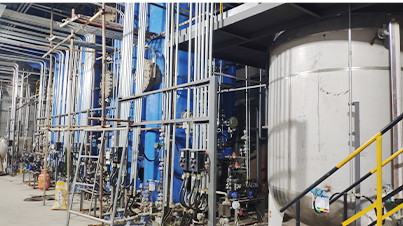Types and Applications of Coagulant and Flocculant Chemicals in Water Treatment
The Importance of Coagulant and Flocculant Chemicals in Water Treatment
Water treatment is a critical process that ensures access to clean and safe drinking water, promotes environmental health, and manages wastewater effectively. Among the myriad of techniques and substances used in water purification, coagulant and flocculant chemicals play a pivotal role. Understanding these chemicals and their applications is essential for achieving optimum water quality and adhering to regulatory standards.
Coagulants The First Step Toward Clarity
Coagulants are substances that facilitate the aggregation of particles suspended in water, forming larger clusters known as flocs. This process is crucial when treating turbid water or wastewater that contains fine particles. Common coagulants include aluminum sulfate (alum), ferric chloride, and polyaluminum chloride (PAC). These chemicals work by neutralizing the charges on suspended particles, allowing them to collide and bind with each other. The result is an increased particle size, which enhances the removal efficiency during subsequent filtration processes.
The choice of coagulant often depends on various factors, including the specific characteristics of the water being treated, cost considerations, and regulatory requirements. Each coagulant has its unique properties, such as solubility and pH range, which can affect the coagulation process. For instance, aluminum sulfate works effectively in a pH range of 6.5 to 8.5, making it suitable for a variety of water sources.
Flocculants Enhancing Settling and Removal
Following coagulation, the treatment process moves into the flocculation stage
. Flocculants are polymers that further aid in the aggregation of smaller flocs into larger particles, enhancing their settling rate and facilitating easier removal. These chemicals increase the size and weight of the flocs, ensuring that they can settle quickly and efficiently in sedimentation basins or be removed via filtration systems.Flocculants come in various forms, including anionic, cationic, and non-ionic categories, each suited for different types of applications. The type of flocculant selected will depend on the nature of the water and the characteristics of the suspended solids. For instance, cationic flocculants are often preferred in industrial wastewater treatment due to their positive charge, which allows them to effectively bind with negatively charged particles.
coagulant and flocculant chemicals

The Synergy of Coagulant and Flocculant Use
The combination of coagulants and flocculants in water treatment enhances overall efficiency. By using both types of chemicals, treatment facilities can achieve rapid clarification, reducing the time and energy required for settling and filtration. This synergy not only ensures higher quality effluent but also helps in optimizing chemical dosages, leading to cost savings and a reduced environmental footprint.
Environmental Considerations
While coagulants and flocculants are essential for effective water treatment, their application must be managed responsibly to mitigate potential negative impacts. The residual chemicals left after the treatment process can affect aquatic ecosystems. Therefore, it is crucial for water treatment facilities to monitor and manage the concentrations of these substances, ensuring that they do not exceed regulatory limits.
Moreover, the development of biodegradable and environmentally friendly coagulants and flocculants has gained attention in recent years. Research in this area aims to improve the sustainability of water treatment processes while maintaining efficiency.
Conclusion
In the realm of water treatment, coagulant and flocculant chemicals are indispensable tools that contribute significantly to achieving clean and safe water. Their effective use not only enhances the quality of treated water but also promotes better resource management in treatment facilities. As the demand for clean water grows globally, understanding and optimizing the use of these chemicals will be crucial in developing sustainable water treatment solutions for future generations.
-
Water Treatment with Flocculant Water TreatmentNewsJun.12,2025
-
Polymaleic AnhydrideNewsJun.12,2025
-
Polyaspartic AcidNewsJun.12,2025
-
Enhance Industrial Processes with IsothiazolinonesNewsJun.12,2025
-
Enhance Industrial Processes with PBTCA SolutionsNewsJun.12,2025
-
Dodecyldimethylbenzylammonium Chloride SolutionsNewsJun.12,2025





